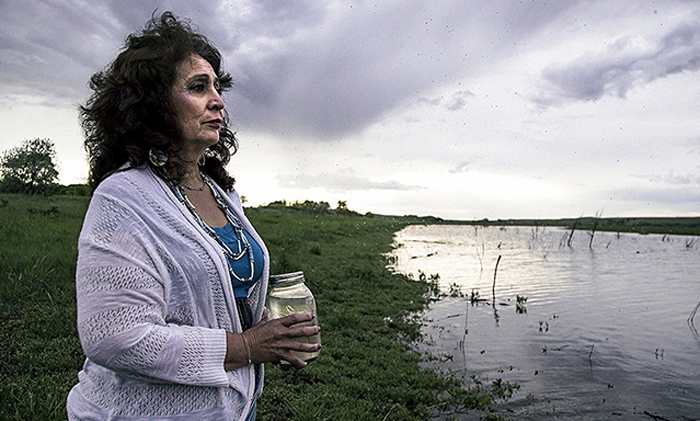Cinema Politica is a series of politically-conscious documentary screenings, taking place in movie theaters across Canada and the world. The latest edition took place at Concordia on Oct. 2, showing a documentary about the 2016 protests at Standing Rock directed by Michelle Latimer, herself a Concordia graduate.
The two-part documentary, featuring Sacred Water and Red Power, is part of the VICE series Rise: Telling indigenous stories from across North America.
The Standing Rock Sioux Tribe made international headlines in 2016 when protests against the Dakota Access Pipeline (DAPL), an oil pipeline whose planned construction passed through ancient tribal lands and burial grounds, evolved into the biggest gathering of Native Americans in living memory. A flashpoint for environmentalists and indigenous activists alike, the protests at Standing Rock grew from 20 people to hundreds in the span of nine months. They brought together activists from around the country and the world, united in their struggle against the “black snake” of oil. Publicity grew following visits by celebrities, such as Shailene Woodley, to the camp, and reached a fever pitch when police turned rubber bullets and water cannons on protesters in freezing-cold North Dakota temperatures.
Latimer was there from the beginning. Initially filmed as just one of many indigenous-centered films in the Rise series, Sacred Water documents the imminent destruction of a handful of residents’ ancestors’ burial grounds. Slowly, their efforts at resistance grow larger than ever anticipated. It is genuinely inspiring to see these same residents—such as Bobbi Jean Three Legs, a young mother whose reflections cast light on the greater problems of alcoholism and sexual assault within indigenous society—transformed into the leaders of a national movement, their voices broadcast to thousands over Facebook Live.
As Standing Rock continued to grow in size, Latimer received VICE’s permission to remain with the camp and make a second film, turning a room at a local casino into an interview booth. In this second film, Red Power, she mixes interviews and protest footage with historical context.
The story of indigenous people in the United States is one of broken treaties and colonial oppression. The American school system omits much of this shameful history; in school, I never learned that in the 1870s indigenous children were forced into white religious boarding schools, where it was illegal to speak their own language. Nor did I ever learn about the history of the American Indian Movement, whose controversial acts of resistance, such as the occupation of San Francisco’s Alcatraz Island in the 1970s, are the precursors to Standing Rock. This history places the 2016 protest in a wider context.
What makes these documentaries powerful is the way in which they unapologetically leave the convention of “objectivity” behind. Latimer is herself an Algonquin, and in working with an indigenous film crew, she has created a proudly indigenous perspective of resistance. For a group of people that has for centuries gone voiceless in the North American mainstream, much to their historic detriment, it is a positive thing to have a strong native voice telling this story.
Latimer returned to her alma mater for the screening, and in a Q&A afterwards, she reflected on her own personal journey as an indigenous person at Standing Rock. The most memorable moment, though, came when the audience’s enthusiastic response moved her to tears. As applause echoed through the auditorium, she lifted one fist in the air, and many in the audience responded in kind. It was a vivid, living moment of solidarity with a director whose films themselves are acts of solidarity.









